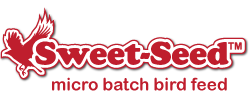How Can I Keep Wasps, Hornets & Bees Away From Hummingbird Feeders?

Bees, hornets and wasps love nectar as much as hummingbirds, but stinging insects are not generally welcome guests at nectar feeders. Not only can insects contaminate nectar so it is unsuitable for the birds to drink, but they may swarm or mob birds and keep them from feeding at all. These insects can also be dangerous to humans if they become agitated, or if there are any concerns about allergic reactions to the insects' stings. Fortunately, these eight techniques are easy ways to control insects and keep them safely away from hummingbird feeders.
Opt for Saucer-Style Feeders Saucer-style hummingbird feeders leak much less than other designs, and if the nectar level is kept lower in the dish, insects will be unable to reach the liquid. Hummingbirds, however, will have no problem sipping from saucer feeders with their needle-like bills and quick, long tongues.
Use Insect Guards While water-filled, cup-style moat insect guards won't stop flying insects like bees and wasps, mesh coverings over feeding ports will keep insects far enough away from the nectar that their short tongues can't reach the liquid. These insect guards should be firmly attached and checked regularly to be sure they don't get cracked, warped or broken.
Move Feeders Away From Insects Most insects will not explore a great area looking for new feeding sources, but instead will stick close to known food sources. Moving a hummingbird feeder 10-15 feet away won't affect the hummingbirds – they will quickly relocate the feeder – but bees and wasps won't notice the feeder in its new position right away. This can be especially effective if the feeder was near flowers the insects will visit instead.
Prevent Leaks and Drips A leaky feeder will attract insects far more quickly than a feeder without drips. Insects can smell drippy nectar and sticky stains, and they will easily feed from spills that lead them right to the nectar feeder itself. Be sure the feeder is filled properly and all seals are tight, and gently wipe off the area around feeding ports each day to remove any residue insects may find.
Say No to Yellow Bright yellow accents on hummingbird feeders may be attractive against a red base, but bees and wasps will see the color even better than hummingbirds, and yellow parts act as a beacon to hungry insects. Opt for feeders without any yellow coloration, or remove decorative accents if possible to deter insects. Yellow feeder parts can also be painted over with an outdoor-safe, non-toxic paint.
Stay in the Shade Insects prefer to feed in brightly lit, sunny spaces, but hummingbirds are more flexible. Hang nectar feeders in shaded areas and insects will be less likely to visit, plus the cooler temperatures in the shade will help minimize leaks and keep the nectar from fermenting quite as quickly.
Remove Other Insect Lures Nectar feeders aren't the only things bees and wasps are attracted to in your yard. While you may want these pollinators to visit your garden, be sure to keep garden waste, manure and compost carefully covered to minimize infestations. Trash should be secure in a covered container, and pick up soda bottles or other sticky, sweet trash so it won't attract more insects.
Feed the Bees Offering bees and wasps a more convenient, tastier food source than your hummingbird feeders can encourage them to move to a different area. Create a bee-friendly corner of your yard with a small bee house, a shallow water source, some bee-friendly plants and even a nectar feeder with a sweeter sugar solution to tempt insects. When they find this sanctuary, they'll be more likely to leave other feeders alone in favor of a better, easier option.
The more techniques you use to discourage bees and wasps, the more successful you'll be at keeping these pests away from your hummingbird feeders. It is important, however, to never use insecticides or wasp sprays near nectar feeders – the fine mist from a spray can easily coat the feeder and its feeding ports, and it is just as poisonous to hummingbirds as it is to insects. With care, however, there will be no need to resort to drastic measures, and you won't need to worry about insects overrunning your hummingbird feeders.
